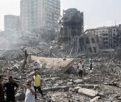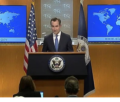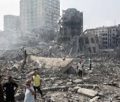Fire: The Overlooked Threat

By Scott Stewart*
Vice President of Analysis, Stratfor
 People sometimes obsess over the potential threat posed by terrorist attacks that use things such as chemical weapons, electromagnetic pulses or dirty bombs. Yet they tend to discount the less exciting but very real threat posed by fire, even though fire kills thousands of people every year. The World Health Organization estimates that 195,000 people die each year from fire, while according to the Global Terrorism Database an average of 7,258 people die annually from terrorism, and that includes deaths in conflict zones such as Afghanistan and Iraq.
People sometimes obsess over the potential threat posed by terrorist attacks that use things such as chemical weapons, electromagnetic pulses or dirty bombs. Yet they tend to discount the less exciting but very real threat posed by fire, even though fire kills thousands of people every year. The World Health Organization estimates that 195,000 people die each year from fire, while according to the Global Terrorism Database an average of 7,258 people die annually from terrorism, and that includes deaths in conflict zones such as Afghanistan and Iraq.
There are also instances in which fire is used as a weapon in a terrorist attack. U.S. Ambassador Christopher Stevens and embassy communications officer Sean Smith, the two diplomats killed in the attack on the U.S. office in Benghazi on Sept. 11, 2012, did not die from gunfire or even rocket-propelled grenade strikes but from smoke inhalation. This fact was not lost on the U.S. Department of State Accountability Review Board that investigated the Benghazi attack. In an interview published by Reuters on Feb. 24, former Ambassador Thomas Pickering, the head of the Accountability Review Board, said more attention should be paid to the threat fire poses to diplomatic posts.
Fire can be deadly and destructive. But whether a fire is intentionally set, as in the Benghazi example above, or is the result of an accident or negligence, there are some practical steps individuals can take to protect themselves.
Fire as a Weapon
The use of fire as a weapon, especially against diplomatic facilities, is not new. It was seen in the November 1979 sacking and burning of the U.S. Embassy in Islamabad, Pakistan, and in the April 1988 mob and arson attack against the U.S. Embassy annex in Tegucigalpa, Honduras. In February 2008, the U.S. Embassy in Belgrade, Serbia, was heavily damaged when a mob lit its lobby on fire. More recently, on Sept. 14, 2012, three days after the Benghazi attack, millions of dollars’ worth of damage was done at the U.S. Embassy in Tunis, Tunisia, after a mob set outbuildings and vehicles ablaze. Fires set by demonstrators also caused extensive damage to the adjacent American school.
Fire has been used to attack non-diplomatic facilities as well. During the November 2008 Mumbai attacks, the group of attackers holed up in the Taj Mahal Palace Hotel started fires in various parts of the hotel. Anarchists and radical environmental and animal rights activists have also conducted arson attacks against a variety of targets, including banks, department stores, the homes and vehicles of research scientists and even a ski resort.
Fire has also been a weapon frequently mentioned by al Qaeda in the Arabian Peninsula in its longstanding efforts to encourage Muslims living in the West to conduct simple attacks. In an interview featured in the first edition of Inspire magazine, al Qaeda in the Arabian Peninsula leader Nasir al-Wahayshi encouraged would-be jihadists to burn down forests and buildings as a way to strike terror into the hearts of their adversaries. This theme was expanded upon in Inspire magazine’s ninth edition, which actually contained a photo tutorial on how to construct timed incendiary devices as well as a fatwa noting that it was religiously permissible to light forest fires as an act of war. It is suspected that Palestinian groups have also been responsible for a number of fires in Israel and the West Bank.
But fire is not a weapon to be used against only buildings and forests — it can also be used to attack transportation targets. In March 2008, a Uighur separatist attempted to light a fire in the restroom of a China Southern Airlines flight from Urumqi to Beijing using two soft drink cans filled with gasoline that she had smuggled onto the flight. Fire is extremely dangerous aboard aircraft because of the oxygen-rich environment, the sensitive nature of avionic controls, the presence of thousands of gallons of jet fuel and the toxic smoke that results from burning plastics and other materials that make up a plane. Examples of deadly fires aboard aircraft include the September 1998 incident involving Swissair Flight 111, in which all 229 people aboard were killed after the crew was overcome by smoke, and the May 1996 ValuJet crash in the Florida Everglades. In a case similar to the one at hand, a June 1983 fire that started in the restroom of Air Canada Flight 797 resulted in the deaths of 23 of the 46 passengers on board. Autopsies showed that most of them died as a result of smoke inhalation.
Trains have also been targeted for arson. In August 2006, an attack against two German trains failed when the timed incendiary devices placed onboard failed to ignite. A February 2007 attack against a train in India proved far more deadly. Two timed incendiary devices placed aboard the Samjhauta Express killed 68 people and injured another 50. Two additional unignited devices were later found in other cars aboard the train. Had they functioned properly, the death toll would have been much higher.
Incendiary devices are not only quite deadly if properly employed, they also have an advantage over explosive devices in that they can be constructed from readily available materials such as gasoline and kerosene. Even the aluminum powder and iron oxide required to manufacture a more advanced incendiary compound such as thermite can be easily obtained or even produced at home.
Another consideration is that quite often other forms of attacks, such as those using explosive devices, rocket-propelled grenades or even tracer ammunition, can spark fires. Many of the victims of the July 7, 2005, London subway bombings were affected not by the bombs’ blast effect but by the smoke from the resultant fires.
Precautions
In addition to the threat of fire as a weapon or resulting from another form of attack, many deadly fires result each year from accidents or negligence. Such fires are deadly enough in the United States and Europe, where there are strict fire codes, but their impact is often magnified in less-developed countries, where fire codes are nonexistent or poorly enforced. For example, while sprinkler systems are mandatory for hotels in the United States, in many parts of the world they are not required.
When I was working on protective details overseas, I learned that it is not uncommon to find items stored in emergency stairwells, leaving them obstructed or sometimes impassable. It is also not unusual to find fire doors that have been chained shut due to the criminal threat.
One thing that can be done to mitigate the threat from fire is to check emergency exits to ensure that they are passable. This applies not only to hotels but also to apartment and even office buildings. In the August 2011 Casino Royale attack in Monterrey, Mexico, the attackers ordered the occupants out of the building before dousing it with gasoline and lighting it on fire, but 52 people died in the incident because they were trapped inside a building by a fire exit that had been chained and locked shut.
While we recommend that travelers staying at hotels overseas should attempt to stay above the second floor for security reasons, we also recommend that they not stay above the sixth floor so that they will be within range of most fire department rescue ladders. We also recommend checking that functional and tested fire extinguishers and fire hoses are present.
In fires, smoke inhalation is a huge problem. According to studies, it is the primary cause of fire deaths and accounts for some 50-80 percent of all deaths from indoor fires. While this is somewhat obvious in confined spaces such as an aircraft fuselage or a subway tunnel, it also applies to buildings. Even buildings that are constructed of concrete or cinderblock and would therefore seem to be resistant to the effects of fire can serve to confine smoke to deadly levels. The U.S. office in Benghazi is a very good recent example. Video of the building after the attack showed that the fire had not badly damaged the building’s structure itself; what killed Stevens and Smith was the smoke.
As Stratfor has noted for many years now, smoke hoods are a very important piece of safety equipment and should be part of everyone’s personal safety plan. Smoke hoods can be carried in a purse or briefcase and can provide the wearer with 15-30 minutes of safe air to breathe. This period of time can make a world of difference to a person caught in a burning building, subway tunnel or aircraft and attempting to escape to fresh air.
Due to past fire incidents on aircraft, the Federal Aviation Administration mandates that airlines furnish a smoke hood for each crew member on commercial flights. They do not provide smoke hoods for each passenger, although high-end executive aircraft normally do. Commercial passengers who would like access to a smoke hood in the case of a fire need to carry their own. Another useful tool in such situations is a small, high-intensity flashlight that can help you find your way through the smoke or dark once you have donned your smoke hood.
Fire is a potentially deadly weapon, one that should not be forgotten, but steps can be taken to mitigate the danger it poses.
(*republished with permission of Stratfor.)
-
Book Shelf
-
 Book Review
DESTINY OF A DYSFUNCTIONAL NUCLEAR STATE
Book Review
DESTINY OF A DYSFUNCTIONAL NUCLEAR STATE
- Book ReviewChina FO Presser Where is the fountainhead of jihad?
- Book ReviewNews Pak Syndrome bedevils Indo-Bangla ties
- Book Review Understanding Vedic Equality….: Book Review
- Book Review Buddhism Made Easy: Book Review
- Book ReviewNews Elegant Summary Of Krishnamurti’s teachings
- Book Review Review: Perspectives: The Timeless Way of Wisdom
- Book ReviewNews Rituals too a world of Rhythm
- Book Review Marx After Marxism
- Book Review John Updike’s Terrorist – a review
-
-
Recent Top Post
-
 CommentariesTop Story
Palestinians at the cross- roads
CommentariesTop Story
Palestinians at the cross- roads
-
 Commentaries
While Modi professes concern for the jobless, “his government’s budget escalates class war”
Commentaries
While Modi professes concern for the jobless, “his government’s budget escalates class war”
-
 CommentariesNews
Politics of Mayhem: Narrative Slipping from Modi ….?
CommentariesNews
Politics of Mayhem: Narrative Slipping from Modi ….?
-
 Commentaries
Impasse over BRI Projects in Nepal
Commentaries
Impasse over BRI Projects in Nepal
-
 CommentariesNews
Yet another Musical Chairs in Kathmandu
CommentariesNews
Yet another Musical Chairs in Kathmandu
-
 CommentariesTop Story
Spurt in Anti-India Activities in Canada
CommentariesTop Story
Spurt in Anti-India Activities in Canada
-
 NewsTop Story
Nepal: Political Stability Under Threat Again
NewsTop Story
Nepal: Political Stability Under Threat Again
-
 NewsTop Story
Accountability Tryst With 2024 Ballot….
NewsTop Story
Accountability Tryst With 2024 Ballot….
-
 NewsTop Story
What Would “Total Victory” Mean in Gaza?
NewsTop Story
What Would “Total Victory” Mean in Gaza?
-
 CommentariesTop Story
The Occupation of Territory in War
CommentariesTop Story
The Occupation of Territory in War
-
AdSense code



















